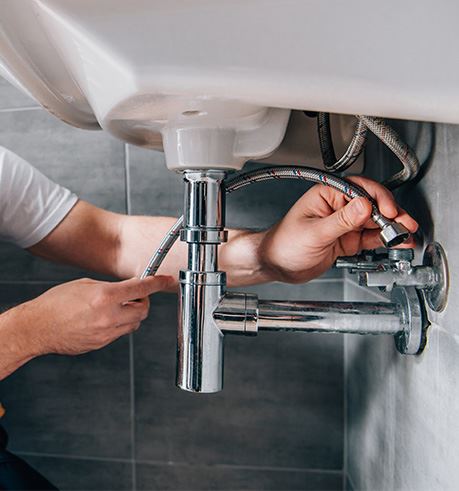Plumbing has come a long long way since it all began thousands of years ago. Do you know how the toilet came to be? How about showers and baths? Well, wonder no more. We’re breaking down the evolution of some of our most common plumbing fixtures and essentials we couldn’t live without today. Keep reading for the evolution of plumbing.
Toilets
If you’re anything like us, the thought of using a porta potty is repulsive. Squatting in the woods while on a camping trip? No thank you. So how did people go to the bathroom thousands of years ago when toilets weren’t even a thought on the mind? Well, it’s changed throughout the years.
As you may know, the ancient Romans were instrumental in creating a lot of systems that we still use to this day. Plumbing was possibly one of their greatest contributions.
They created bathhouses that were similar in concept to a YMCA with a lot of features and services that were open to the public. Within these bathhouses, they had large public baths, changing rooms, and toilets!
Most of these structures were made of stone, and they were all communal. The Romans did not care as much about public nudity as present-day society does. The public toilets were connected to the sewer system which was advanced for its time, but private toilets were not; instead human waste was used as fertilizer for plants and crops.
After the fall of the Roman Empire, toilet innovation came to a bit of a standstill. In the 11th century, castle architecture began including toilet rooms within their designs. Their bathrooms were essentially made up of a seat that was over a massive hole. So anything that you excreted would drop from the toilet straight to either the ground or into moats.
Luckily, we eventually moved away from the tower toilets, when Sir John Harington invented the first flushing toilet in 1596. Sir John was the godson of Queen Elizabeth I. His toilet used a waterproof 2-foot-deep oval bowl and was fed by water from an upstairs cistern to flush the bowl. IF you’ve ever heard the bathroom referred to as “the john”, this is why.
Since then, toilets have only continued to evolve further and further until they looked like the ones we have in all of our homes today.
Water and Sewage Transportation
As we mentioned in the toilet section, the Romans were responsible for inventing a rudimentary version of a sewage system. They were also responsible for the invention of a water transport system that we still use to this day known as the aqueduct. Aqueducts that were used during the Roman empire are still in use in Rome! Now, they’re also used all over the world to transport water from lakes and springs to local reservoirs so that residents of all towns have access to freshwater.
Sewer systems have also come a long way from the time of the Romans. Lack of sewage rules lead to a lot of disease and bacteria throughout ancient times and even up through the 1800s, which is why in 1855, Chicago decided to revamp their sewage system. Throughout the mid-1800s alone, Chicago had lost thousands of lives due to cholera, typhoid, and dysentery outbreaks. To combat this, Chicago implemented an upgraded sewer system by laying sewer lines above the existing main roads, covering them with dirt, and elevating the roads out of the swampy conditions that allowed those diseases to thrive.
Luckily for all of us living in 2021, diseases like cholera, typhoid, and dysentery have been largely eradicated. Now when selecting our plumbing for our homes we’re concerned with the new features on the toilet and what finish the fixtures come in.


